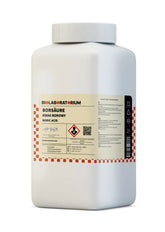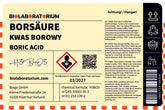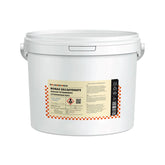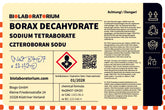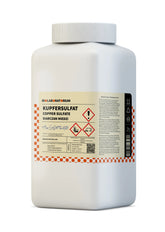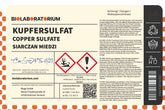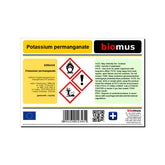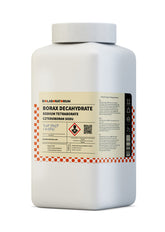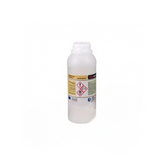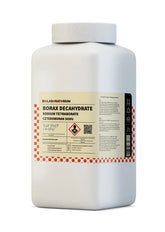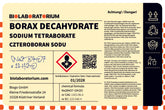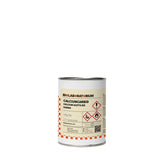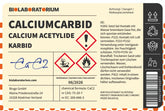Potassium bromide – Is it safe? Properties and application
Potassium bromide is a chemical compound used in many fields. Whether in pharmacy, photography, or industrial processes – potassium bromide is a versatile substance with interesting properties. But how safe is handling it? In this blog post, we take a closer look at potassium bromide, its applications, and possible risks.
What is potassium bromide?
Potassium bromide (KBr) is a crystalline, colorless solid that is easily soluble in water. The chemical compound consists of potassium (K) and bromine (Br) in a 1:1 ratio. Potassium bromide is an ionic salt that occurs naturally as the mineral sylvite.
Potassium bromide was first discovered in 1826 by the French chemist Antoine-Jérôme Balard. Since then, it has developed into an important basic material in chemistry and pharmacy.
Properties of potassium bromide
Potassium bromide is characterized by the following properties:
Physical properties
- Crystalline, colorless powder or granulate
- Melting point: 730 °C
- Boiling point: 1435 °C
- Solubility in water: 65 g/100 ml (at 20 °C)
Chemical Properties
- Ionic compound composed of potassium and bromide ions
- Reacts with acids to form hydrobromic acid (HBr)
- Relatively stable against heat and oxidation
Biological properties
- Essential for humans in trace amounts
- Can have a sedative (calming) effect in higher doses
- Absorbed by the body and excreted through the kidneys
Applications of potassium bromide
Due to its diverse properties, potassium bromide is used in numerous applications:
Pharmacy and medicine
- Active ingredient in medications for epilepsy, anxiety, and sleep disorders
- Component of contrast agents in radiology
- Used in eye drops for the treatment of glaucoma
Photography
- Formerly an important component of photo emulsions for black-and-white films
- Still used today in some special processes
Chemical Industry
- Starting material for the production of other bromine compounds
- Use as a flame retardant and drying agent
- Use as a catalyst in chemical reactions
Further applications
- Component of glass and ceramic masses
- Use in fire extinguishers and extinguishing powders
- Use in laboratories as a reagent and buffer solution
Safety and risks
Although potassium bromide is used in many applications, handling it is not without risks. As with many chemical substances, some safety aspects must be observed:
Health risks
- In higher doses, potassium bromide can cause fatigue, confusion, and memory disorders
- In case of overdose, there is a risk of respiratory disorders and circulatory problems
- Long-term intake can lead to bromism (bromine poisoning)
Environmental risks
- Potassium bromide is toxic to aquatic organisms and can burden the environment
- Improper disposal can lead to contamination of soils and waters
Fire hazard
- Potassium bromide itself is not flammable but can release flammable gases upon contact with acids
For these reasons, careful and professional handling of potassium bromide is essential. Users must know and comply with the applicable safety regulations.
Conclusion
Potassium bromide is a versatile chemical basic material with numerous applications in medicine, industry, and research. However, handling it also involves certain risks that must be considered. With proper handling and adherence to safety regulations, potassium bromide can be used safely and effectively.
For private individuals, the direct purchase and possession of potassium bromide is not allowed or at least heavily regulated in most countries. Therefore, purchase and use should be reserved for professionals. Only in this way can safe and responsible handling of this useful but potentially dangerous chemical be ensured.

